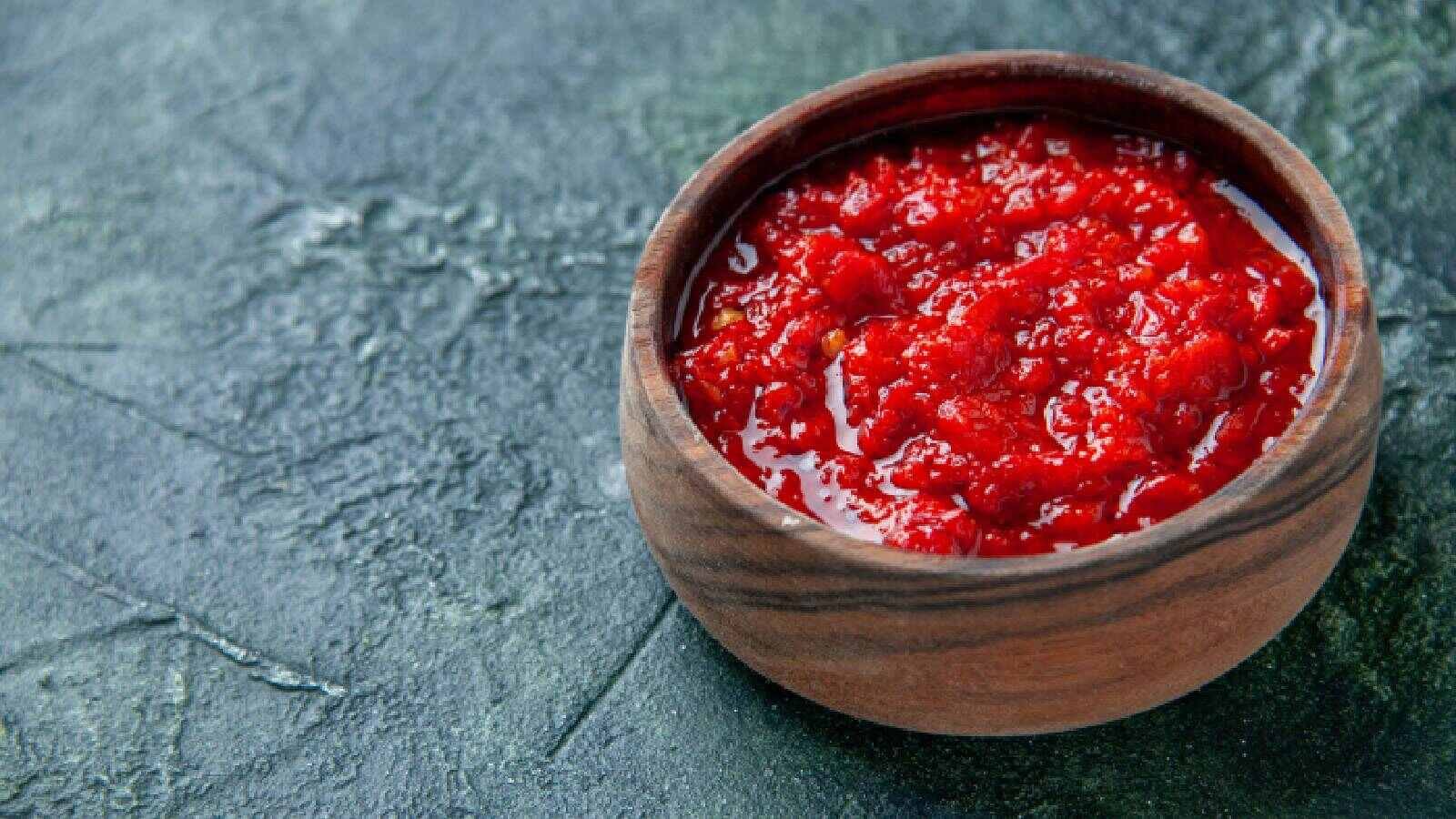[ad_1]
Red Ant Chutney or Kai Chutney from Odhisha recently received the Geographical Indication (GI) tag for its taste, texture and nutritional benefits.
Red Ant chutney or the Kai Chutney, a thick paste from Odisha in India, has been touted as quite the trendsetter nowadays. It has recently received the Geographical Indication (GI) tag for its taste, texture and nutritional benefits. The name of the chutney is enough to raise many questions on its taste, how it is made, and if its dangerous.
What is red ant chutney?
In the Mayurbhanj district of Odisha, the tribals prepare a unique dish called Kai Chutney or Red Ant Chutney. “It is made using red weaver ants along with a blend of spices. The GI tag emphasises both the dish’s distinctive flavour and its nutritional value. Apart from being nutritionally dense, it has healing properties too,” explains nutritionist Archana S.

What are the nutritional properties of red ant chutney?
Research conducted by Orissa University of Agriculture and Technology reveals that red weaver ants are rich in proteins, calcium, zinc, vitamin B-12, and other nutrients. “Consumption is believed to boost immunity, enhance vision, and benefit the brain and nervous system. However, further scientific exploration is needed to thoroughly understand the nutritional and medicinal aspects of these ants,” says Archana.
How is red ant chutney made?
Red ant nests are carefully collected, soaked to separate them from debris, and sun-dried. The dried ants and eggs are then combined with a mixture of garlic, ginger, coriander leaves, cardamom, tamarind, green chilies, salt, and a hint of sugar to enhance the taste. “The chutney maintains its quality for up to a year when stored in glass containers,” says Archana.
How does red ant chutney taste?
Weaver ants contribute a sour and tangy flavour to the chutney, deriving the tanginess from formic acid. This unique taste adds to the appeal of Kai Chutney, and has become quite a delicacy. In fact, selling this unique tasting chutney has become an occupation for many in Odisha.
Also Read: 5 healthy and delicious chutney recipes to spice up your meals
What are the health benefits of red ant chutney?
1. Nutritive Supplement
Red weaver ants are a source of carbohydrates, proteins, lipids, cholesterol, amino acids, vitamins, and minerals, providing nutritive supplements to the human body.
Select Topics of your interest and let us customize your feed.
2. Cures Infection
The ants may contain bioactive metabolites that could aid in treating enteric infections and Whooping cough disease.
3. Antimicrobial Activity
Red weaver ants are believed to exhibit antimicrobial activity against human pathogenic bacteria and Candida species.

4. Improves brain health
This chutney is said to enhance the development of the brain as well as the nervous system. It also helps treat depression and memory loss.
More research is required to uncover the full potential and scientific aspects of these indigenous practices, says Archana.
Also Read: This Bhang ki chutney can be a perfect addition to your Mahashivratri meal
What are the other delicacies made by using ants?
In Chhattisgarh, a preparation known as Chapda Chutney uses red ants, ground using a stone grater, and has a sour taste. Internationally, ants are used in various culinary practices. “In Laos, ant eggs (larvae and pupae of weaver ants) are used in salads and soups. In Thailand, ant eggs are stir-fried with local herbs and vegetables. Colombia features hormigas culonas ants as snacks, fried or roasted with salt. Mexico enjoys escamoles, or ant egg caviar, added to dips and dishes as a delicacy,” says Archana. In fact, not only red ants, but many other insects and worms have been consumed in India as delicacies, and these come with their own list of health benefits.
[ad_2]
Source link








